Last updated on April 29, 2024
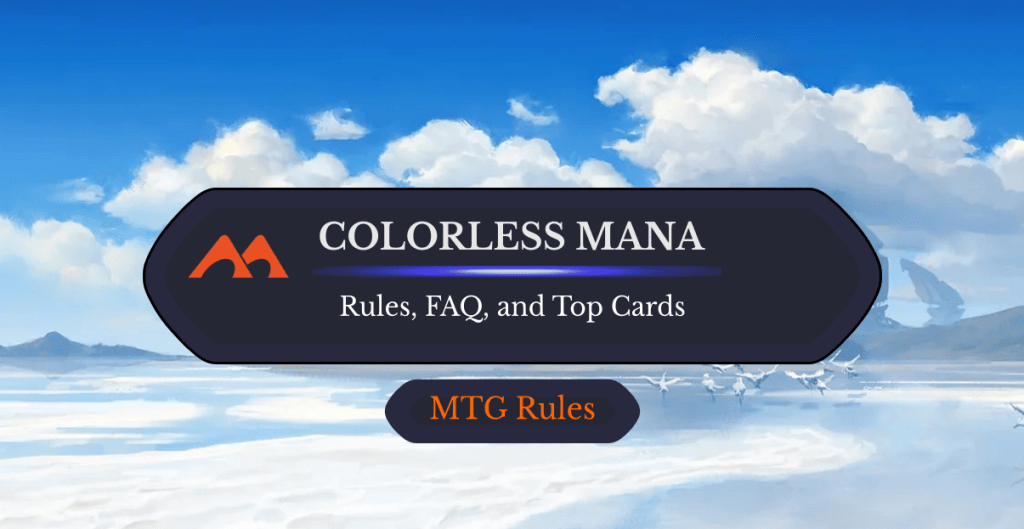
Adarkar Wastes | Illustration by Piotr Dura
Digging into colorless mana in MTG can feel a bit like trying to understand a page written in dense legalese without being lawyers ourselves. There are subtle yet crucial differences between types and colors of mana, on top of some quasi-philosophical questions about the generic colorlessness of colorless.
But fear not! Colorless mana in MTG is fairly straightforward once we clarify a couple of concepts, so let's try to paint the whole picture and see what's what.
How Does Colorless Mana Work?

Reality Smasher | Illustration by Jason Rainville
Here's the thing: there are five colors of mana, but there are six types of mana.
White, blue, black, red, and green are the five mana colors, as defined by rule 106.1a from Magic's Comprehensive Rules.
White, blue, black, red, and green are also five of the six mana types – and the sixth mana type, as defined by rule 106.1b, is colorless.
Colorless is not a color. When a card asks you to choose a mana color, you can't choose colorless. For example, City of Brass says: “Add one mana of any color,” so it can't generate colorless mana.
As another example, if I have an Adarkar Wastes in play, and you have an Exotic Orchard in play, you can't choose c with your Orchard even though my Adarkar Wastes can create colorless mana. Exotic Orchard says: “Add one mana of any color that a land an opponent controls could produce.” You could choose or if you want, since Adarkar Wastes also produces those, and they’re indeed colors. But c isn't a color so my Wastes are off limits to your Orchard.
But!
Since colorless is a mana type, if I have in play both Adarkar Wastes and Reflecting Pool, then my Pool canproduce colorless mana because Reflecting Pool says “Add one mana of any type that a land you control could produce.”
Specifically for Commander: Colorless doesn't contribute to a card's color identity. You can fit Flayer of Loyalties in any deck, just like any other colorless card.
If your commander itself is colorless, like Kozilek, the Great Distortion, your whole deck must be colorless. In this sense, commanders with a colorless mana cost like Kozilek, the Great Distortion and commanders with generic mana costs like Kozilek, Butcher of Truth or Karn, Legacy Reforged work the exact same way. They’re all colorless, and if one of them is your commander your deck's identity must be colorless.
The History of Colorless Mana in MTG
Colorless was present at Magic's birth. The most famous mana rock in Commander, Sol Ring, was right there in Alpha, and there were two other colorless producers in Magic's first expansion: Basalt Monolith and Mana Vault.
As MTG's head designer Mark Rosewater retells, “The idea of colorless mana began with the game. It was pretty straightforward. Most mana comes in one of five colors (white, blue, black, red, or green), but there is a sixth subset of mana that is not any color.”
In early sets, Sol Ring‘s text was spelled out as “colorless”. This changed in Onslaught, which used for editing reasons. But that proved a bit confusing, as illustrated by Unknown Shores from Theros. This is how the original print looks:
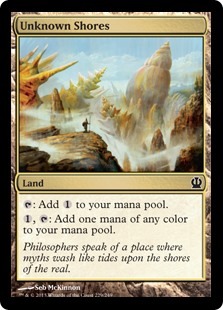
The first , in the mana ability, means “colorless”. But the second , in the activated ability, means “generic”. This didn't make much difference in practice, though, because for more than two decades there weren't any cards with colorless mana costs.
This changed in 2016 with Oath of the Gatewatch, the last expansion of the Battle for Zendikar block, which introduced cards like Kozilek, the Great Distortion with c in their casting cost.
“After much soul-searching,” writes Mark Rosewater, “not just on the design team but R&D in general, we came to the conclusion that we had to stop using the mana circle with a number to represent both generic and colorless mana. This decision isn't just for Oath of the Gatewatch but for all of Magic. Changing how we represent colorless mana was easier, as it's represented far less, so we opted to make a new mana symbol that represents one colorless mana.”
Cards that can produce c are evergreen. Wilds of Eldraine has two such cards, Doctor Who has four, and The Lost Caverns of Ixalan includes Cavern of Souls.
But, on the other hand, cards with colorless mana costs are quite rare: there are thirteen such cards in total in all Magic, and outside of reprints they’re all from Oath of the Gatewatch and the Eldrazi Unbound Commander Masters deck.
What Counts as Colorless Mana?
Colorless mana is anything that has the c symbol on it.
In this sense, it's exactly the same as any other type of mana. c can be part of the casting cost, like with Flayer of Loyalties‘s; the mana type that the card generates, like Sol Ring or Reliquary Tower; or the cost for an activated ability, like Endbringer or Eldrazi Displacer.
Colorless isn’t one of the five colors of mana, but it’s one of the six types of mana. And as one of the six types of mana c works exactly the same as , , , , or .
Colorless vs. Generic Mana
The difference here is that colorless is a type of mana, and generic is a mana cost.
As Mark Rosewater wrote, “You can use colorless mana to pay for generic mana costs, but they're not the same thing. ‘Generic' is a type of cost. ‘Colorless' is a type of mana. You cannot produce generic mana, nor could you have a colorless cost before Oath of the Gatewatch.”
When colorless mana was introduced, Wizards of the Coast reworked old cards to make the difference clear. Here are two different prints of Unknown Shores, one from Theros (the original print) and an Oath of the Gatewatch reprint.
In the Theros versions, the means two different things: “colorless” in the mana ability, and “generic” in the cost of the activated ability. The Gatewatch version (and all cards since that expansion) use c for the colorless mana type, and for the generic mana cost.
Can Colorless Mana Be Paid by Any Color?
Nope. Colorless mana costs can only be paid by colorless mana.
If I want to cast Flayer of Loyalties, I'll need to have colorless mana sources like Wastes, Adarkar Wastes, and Sol Ring to pay the cc in Flayer of Loyalties‘s cost. I'll also need 8 other mana sources of any type (they can be colored or colorless) to pay the generic mana.
Can You Tap Basic Lands for Colorless Mana?
Nope. Only Wastes tap for colorless mana. Other basic lands tap for whatever mana type they produce.
Can You Sacrifice a Treasure for Colorless Mana?
No, Treasures can't produce colorless mana. That's the subtle but crucial difference between mana color and mana type.
When a card lets you choose a color, like Treasure does, you have to choose one of the five colors (namely ).
Cards that let you choose a type, like Reflecting Pool does, let you produce c mana as long as you meet the indicated requirements (in this case, having a land that can produce c, like Adarkar Wastes).
Can Command Tower Tap for Colorless?
No, you can't tap your Command Tower for colorless mana, for the same reason as Treasures: you have to choose a color, and colorless isn’t a color.
And that's true even if your commander requires c to be cast! Commanders with a colorless color identity, like Kozilek, the Great Distortion, are among the very few commanders that have no use for Command Tower.
Best Colorless Mana Cards
Magic has a metric ton of good colorless cards, but to date only thirteen of them require colorless mana to cast.
Kozilek, the Great Distortion is a multi-format star with showings in Legacy and Modern and a fairly popular commander.
For Modern, Warping Wail is probably the most useful c card, usually with a couple of copies in UrzaTron decks.
Endbringer is a colorless Swiss Army knife that can be reused on each of your opponents' turns, and therefore quite popular in Commander. And like Kozilek, the Great Distortion, it has seen some play in other Eternal formats.
Zhulodok, Void Gorger does a decent job as a colorless Eldrazi commander, but it sees no play outside multiplayer formats.
Here are the other nine cards with colorless mana costs, sorted by their popularity in Commander:
- Deceiver of Form
- Matter Reshaper
- Rise of the Eldrazi
- Thought-Knot Seer
- Spatial Contortion
- Flayer of Loyalties
- Reality Smasher
- Calamity of the Titans
- Walker of the Wastes
Wrap Up
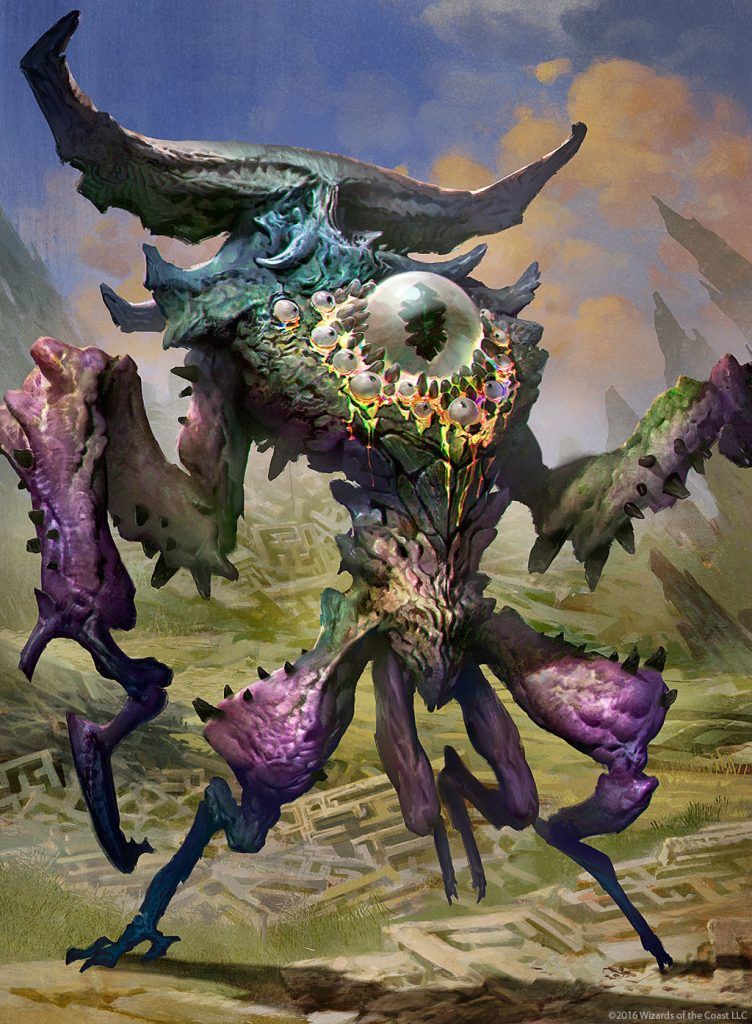
Thought-Knot Seer | Illustration by Svetlin Velinov
That would be it for colorless mana in MTG.
Sorry about the tide of “type” I had to type! But that's really the crux of the confusion about colorlessness in MTG: c isn't one of the five mana colors, but it's one of the six mana types.
I hope you've found the explanations and examples colorful enough, and if this mechanical deep dive is the type of article you'd like to see more of, please drop a comment below, stop by the Draftsim Discord to let us know!
And be careful out there – Eldrazi are coming!
Follow Draftsim for awesome articles and set updates: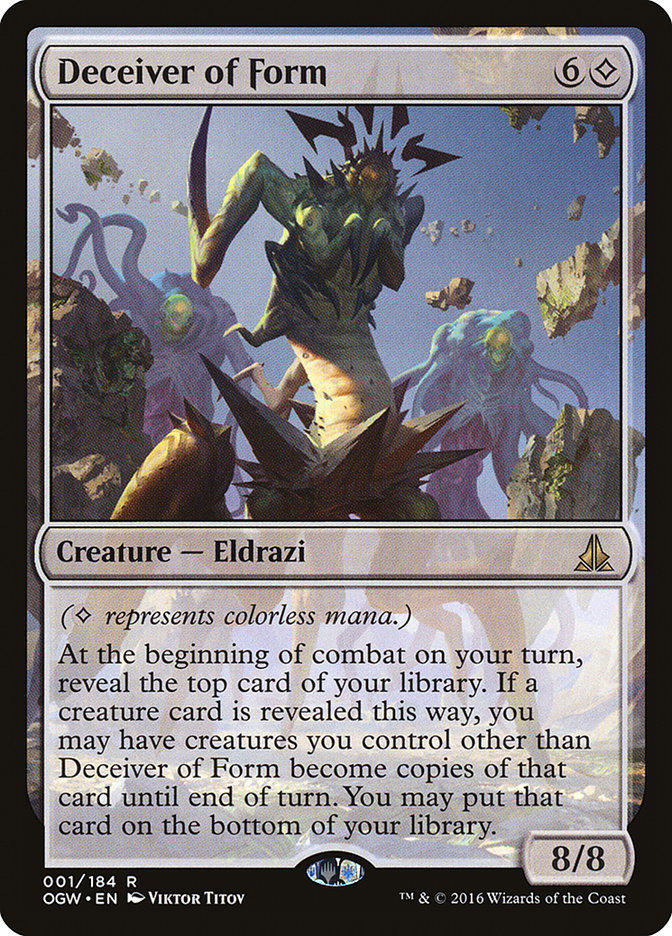
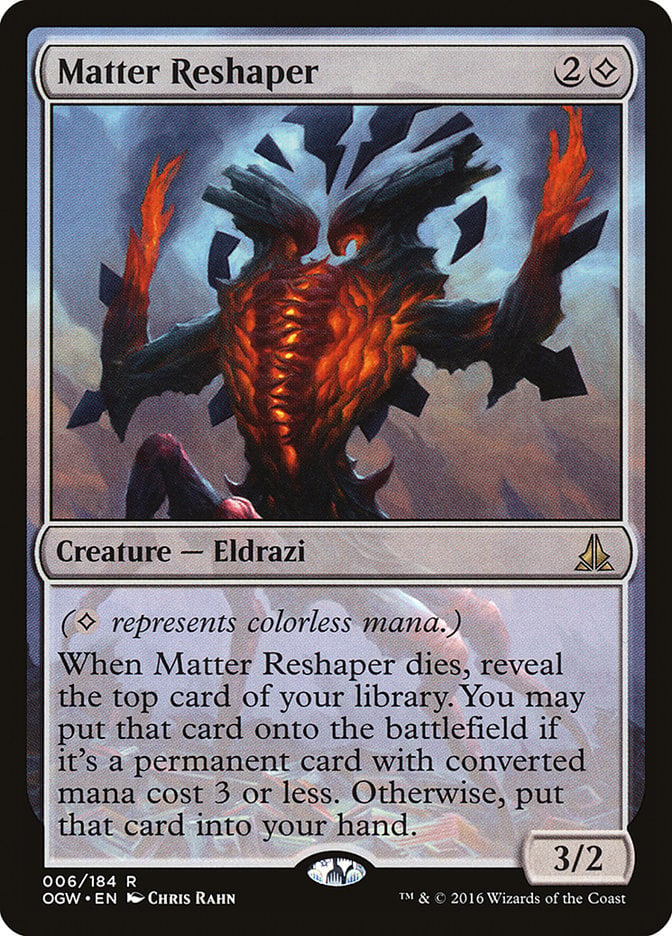
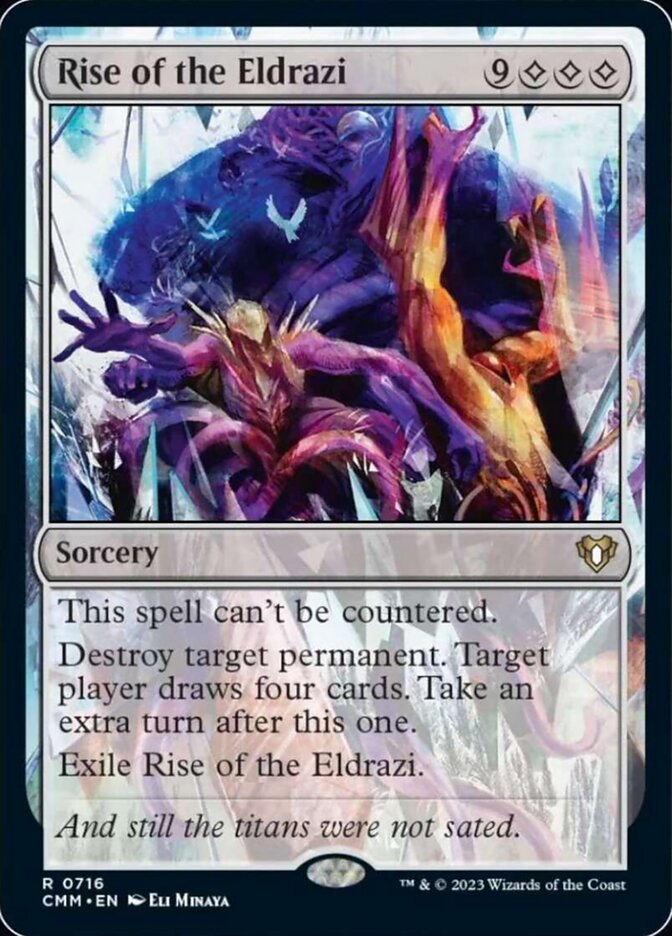

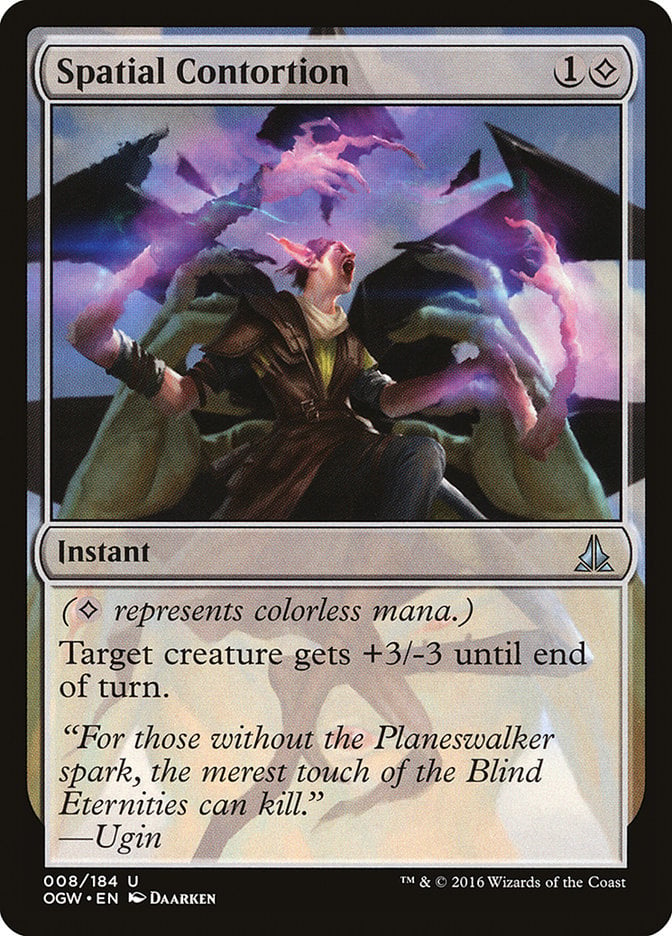



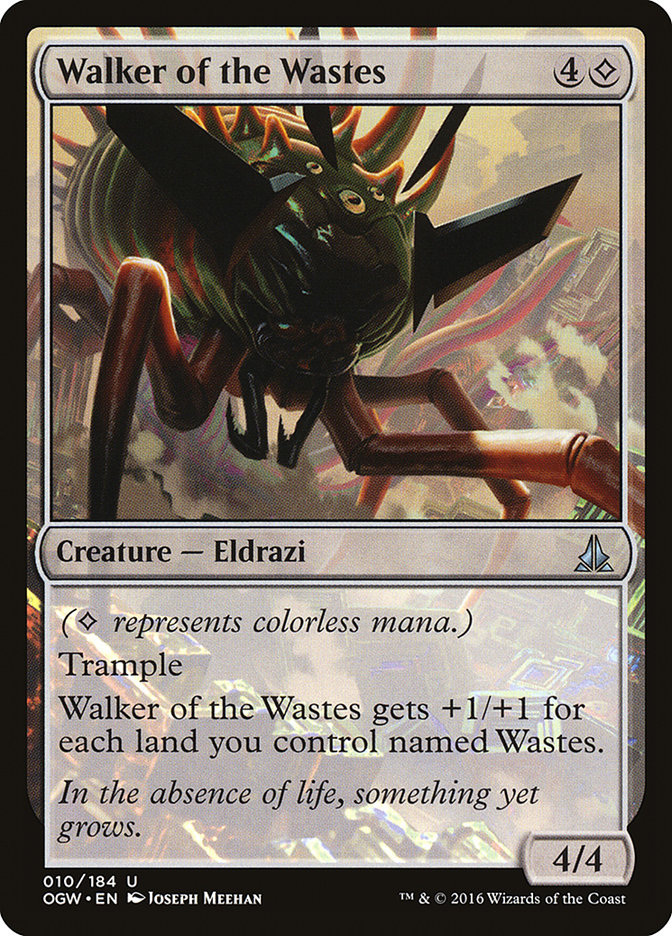


Add Comment